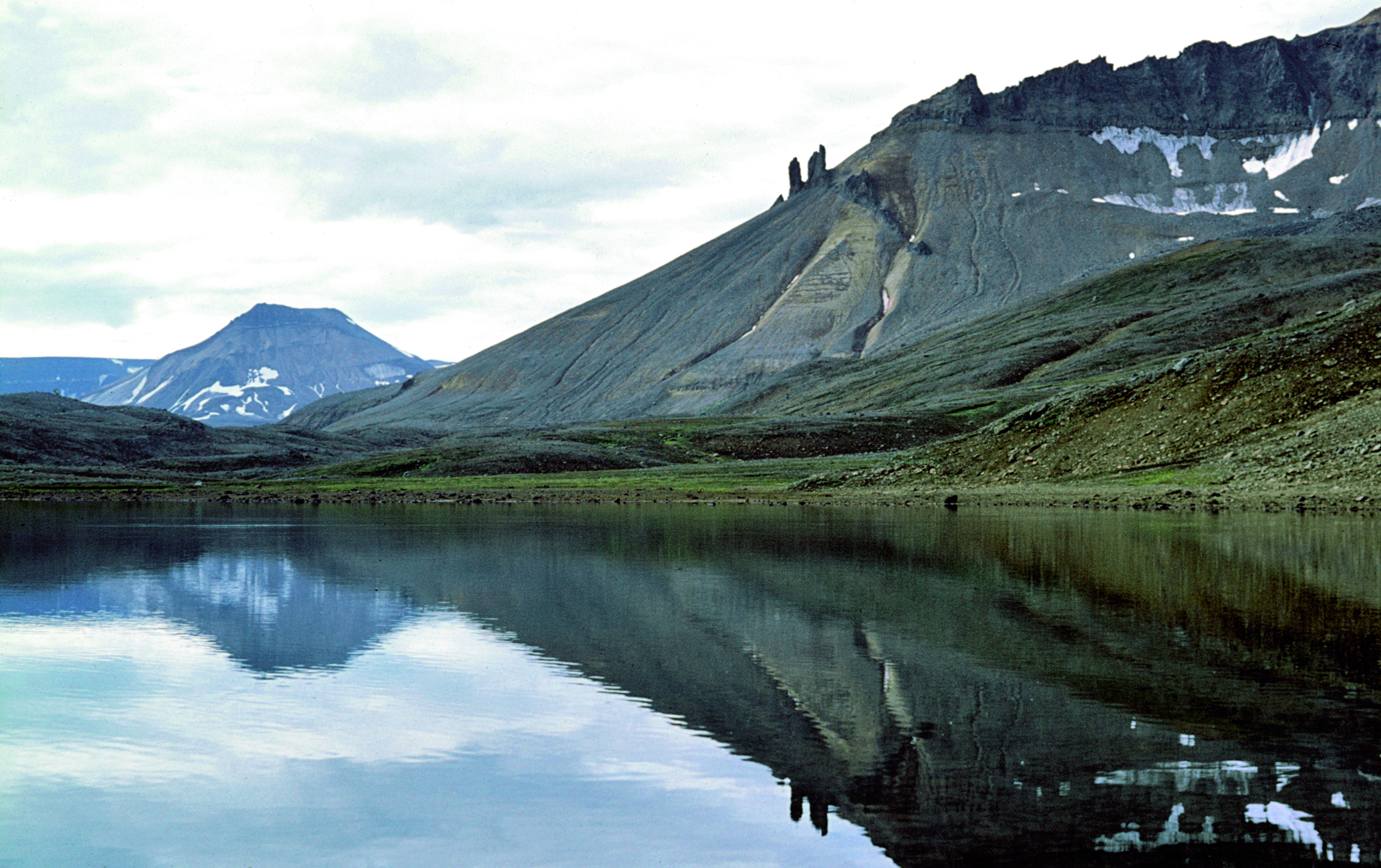Vinna við nýjar heimasíður Umhverfis- og orkustofnunar og Náttúruverndarstofnunar er í gangi. Heimasíða Umhverfisstofnunar er virk á meðan vinnunni stendur. Information in English
Public park in Glerardalur

Part of Glerárdalur was protected as a country park on June 6th 2016. Glerárdalur shows signs of being formed by glaciers, and many diverse rock types are found there. In addition, you can find fossilised plant remains, lignite and silicated wood.
The aim of the protection is to preserve Glerárdalur and its surrounding mountains for outdoor activities for the general public, nature viewing and education. In addition, the protection protects land that is mostly unspoiled, with diverse geological formations and vegetation, and thus promotes the preservation of biological diversity and variation in geological formations.
Fólkvangur in Glerárdalur covers an area of 74.4 km2.
Country parks are areas that are protected at the municipality’s initiative. The main goal in protecting country parks is to preserve areas for outdoor activities and general use, and the protection should aim to facilitate the general public’s access to nature and related cultural heritage near urban areas for outdoor activities, nature viewing and educational purposes.
Natural and Cultural Heritage
Geological Formations
Glerárdalur was formed by glaciers over a long period of time and carved out of bedrock from the Miocene geological epoch. The bedrock is characterised by basalt lava layers approx. 10 million years old, and its proximity to an ancient central volcano is the cause of the diversity of rock types found there, especially high in the valley. They include acid and basic volcanic rock, acid plutonic rock and numerous dykes. Fossilised plant remains are found in the area, lignite and silicated wood. The bedrock is mainly accessible around river-beds and in the mountain slopes, as it is largely covered by glacial drift (tillite) from the end of the ice age. The valley’s hillsides are also marked by landslides. At the top of the valley is a landfill glacier, Lambajökull, that adorns the landscape along with other small glaciers.
Flora and Fauna
Vegetation in Glerárdalur is fairly varied, both in terms of species and vegetated lands, and heaths and wetlands make their mark on the valley.
More than half of the valley is considered to be vegetated, i.e. with more than 10% vegetation cover. Mossy areas are dominant in the heart of the valley, along with sedge fens closest to the river. Mossy areas are also prominent high in the hillsides below gravel plains and landslides. Lower, and mid-way through the valley, heathlands dominate and wetlands are increasing. Further out in the valley, wetlands are dominant, bogs in particular. There are great bays in the southern part of the valley in Súlumýrar. For further information, see report from the Icelandic Institute of Natural History.
Around 87 species of higher plants have been found over 1000 m above sea level in Glerárdalur, which is considered a great variety in alpestrine vegetation.
Birdlife in Glerárdalur is quite diverse. In 2012, a survey of the birdlife in the area was carried out and 21 species of birds were seen. Meadow pipit turned out to be the most common nesting bird, followed by whimbrels, the European golden plover and European oystercatcher. It is noteworthy that 38 pairs of pink-footed geese nest in Glerárdalur, which is considered unusual so close to the ocean. One species on the threatened list was spotted during the survey, harlequin duck, but nesting could not be confirmed (Arnór Þórir Sigfússon, 2012. Birds of Glerárdalur, Report, VERKÍS, job no. 12123001. Prepared for Fallorka).
Useful Information
The country park is in Glerárdalur, above Akureyri. There are rest stops in two places, by Hlíðarfjallsvegur and by the nature reserve boundaries south of Glerá. There are numerous hiking trails in the country park that can be seen on the map.
Code of conduct
- Off-road driving of motor vehicles is prohibited within the country park. Motor vehicles, however, may be driven on snow-covered and frozen ground, as long as there is no risk of damage to the environment.
- Horse riding is permitted in the country park on marked paths. Using horses for herding purposes is allowed, but herding horses through the country park is prohibited.
- Air traffic that might disturb visitors and wildlife is prohibited, unless with the permission of the Environment Agency (traditional approach and departure flights from the airport, search and rescue flights are excluded).
- Damaging vegetation and disturbing wildlife is prohibited.
- The release of exotic organisms within the country park is prohibited. This includes growing exotic plant species.
- Disturbing, or in any way damaging, the geological formations is prohibited.
- All construction work, including building structures and other land alterations, are subject to permission from the Akureyri Municipality and the Environment Agency of Iceland.
- Sheep grazing is permitted within the country park.
- Disposing of soil materials, garbage and waste is prohibited within the country park.
- All use of firearms within the country park is prohibited, with the exception of the permitted hunting of ptarmigan in accordance with the rules thereof.